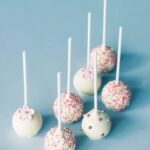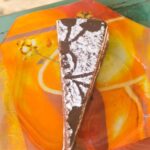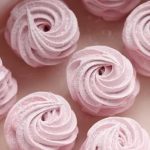Baking and decorating a cake can be a fun and rewarding hobby that allows you to unleash your creativity and indulge in delicious treats. Whether you’re an experienced baker or just starting out, the process of creating a beautiful and mouthwatering cake from scratch can be both satisfying and enjoyable.
The art of baking and decorating a cake provides an opportunity for self-expression, allowing you to personalize your creations to suit any occasion or theme. From birthday parties to weddings, cakes are often the centerpiece of celebrations, making them even more special when they are homemade with love.
Not only does baking and decorating a cake offer a chance for artistic expression, but it also allows you to explore different flavors, textures, and aroma combinations. From classic vanilla or chocolate to unique flavor combinations like strawberry lemonade or salted caramel, there is no limit to the delicious possibilities.
Whether you have years of experience in the kitchen or are just beginning your journey as a baker, this article will guide you through the step-by-step process of baking and decorating a cake. From gathering the essential ingredients and tools to troubleshooting common issues, we will cover everything you need to know.
So get ready to roll up your sleeves and embark on an adventure in the world of cake baking and decorating. With some patience, practice, and a little bit of creativity, you’ll soon be creating stunning cakes that will impress not only yourself but also your loved ones. Let’s dive into this exciting journey together.
Gathering the Ingredients
When it comes to baking a cake, having the right ingredients and tools is crucial for a successful outcome. Gathering all the necessary components beforehand will ensure that you have everything you need and avoid any last-minute trips to the store. Here is a detailed list of essential ingredients and tools that you will need for your cake baking adventure:
Ingredients:
- Flour: All-purpose flour is typically used for most cake recipes, but consider using cake flour for a lighter texture.
- Sugar: Granulated sugar is commonly used in cakes to provide sweetness.
- Eggs: A key ingredient that adds structure and richness to the cake batter.
- Butter or oil: These fats add moisture to the cake and enhance its flavor. Unsalted butter is preferred by many bakers.
- Baking powder or baking soda: These leavening agents help the cake rise by creating air bubbles in the batter.
- Milk or buttermilk: Provides additional moisture and helps create a tender crumb in the cake.
- Vanilla extract: Adds flavor and aroma to the cake.
Tools:
- Mixing bowls: Have at least two sizes of mixing bowls available for different tasks like mixing dry ingredients or beating eggs.
- Measuring cups and spoons: Accurate measurements are crucial in baking, so invest in a set of measuring cups and spoons.
- Electric mixer or whisk: These tools are essential for combining ingredients thoroughly. An electric mixer makes the process much easier.
- Cake pans: Choose round, square, or rectangular pans depending on your desired shape. Consider investing in non-stick pans for easy removal of the baked cake.
- Cooling rack: This helps cool down the hot cake evenly without trapping excess moisture underneath.
In addition to these basic ingredients and tools, it’s important to gather any specific ingredients mentioned in your recipe, such as chocolate chips, nuts, or fruits. Once you have everything on hand, it’s time to move on to preparing the cake batter and bringing your delicious creation to life.
Remember to double-check your supplies list before you start, as running out of an essential can be disappointing and disrupt your baking flow. With all the ingredients and tools gathered, you’re now ready to proceed to the next step: preparing the cake batter.
Preparing the Cake Batter
Creating the perfect cake batter is essential for achieving a delicious and flawless base for your cake. Follow these step-by-step instructions to ensure success:
- Measure and Sift Dry Ingredients: Start by measuring out the required amount of flour, baking powder, salt, and any other dry ingredients specified in your recipe. To avoid lumps in your batter, it’s important to sift these dry ingredients together using a fine-mesh sieve. Sifting helps aerate the flour and ensures an even distribution of leavening agents.
- Cream Wet Ingredients: In a separate bowl or stand mixer, cream together the butter and sugar until light and fluffy. This step is crucial as it helps incorporate air into the mixture, resulting in a light and tender texture for your cake.
- Add Eggs Gradually: Beat in the eggs one at a time, ensuring that each egg is fully incorporated before adding the next one. This gradual incorporation prevents the batter from becoming too dense and promotes even mixing.
- Alternate Adding Dry and Liquid Ingredients: Begin by adding about one-third of the sifted dry ingredients into the creamed mixture, mixing until just combined. Then, add half of your liquid ingredients (such as milk or buttermilk), followed by another third of dry ingredients. Repeat this process until all dry and liquid ingredients are incorporated into the batter.
- Mix Until Just Combined: Overmixing can lead to a tough cake, so it’s important to mix until just combined after each addition. Avoid overworking the batter; otherwise, you risk developing gluten strands which can result in a dense texture.
- Scrape Down Bowl: Occasionally stop mixing to scrape down the sides of your bowl with a spatula to ensure all ingredients are properly incorporated.
- Flavorings and Mix-ins: If your recipe calls for flavorings or mix-ins like vanilla extract, cocoa powder, or chocolate chips, add them at this stage. Gently fold in these additions until evenly distributed throughout the batter.
By following these step-by-step instructions, you’ll be well on your way to creating a flawless cake batter. Remember to take your time and measure accurately for the best results. The next section will cover baking temperatures and times to guarantee perfect results in the oven.
Baking the Cake
Understanding Baking Temperatures
One of the key factors in baking a perfect cake is understanding and mastering baking temperatures. The temperature at which you bake your cake can greatly affect its texture, moisture, and overall appearance. Most cake recipes recommend preheating the oven to a specific temperature before putting in the batter. This initial burst of heat helps create a beautiful rise in the cake.
Knowing Your Oven
Before you begin baking your cake, it’s important to familiarize yourself with your oven. Ovens can vary in terms of their accuracy and consistency when it comes to temperature. To ensure even baking, consider investing in an oven thermometer to confirm that the temperature indicated on the oven dial matches the actual temperature inside.
Once you have confirmed the accuracy of your oven’s temperature, be sure to preheat it to the recommended setting stated in your recipe. Preheating allows for an even distribution of heat throughout the oven and ensures that your cake bakes evenly from all sides.
Maintaining Consistent Baking Times
Baking times are equally important when it comes to achieving perfect results. Follow the recommended baking time stated in your recipe and avoid opening the oven door too frequently during baking. Opening the door too often can cause fluctuations in temperature, resulting in an uneven bake or a collapsed cake.
To determine if your cake is fully baked, insert a toothpick into the center of the cake. If it comes out clean or with only a few crumbs clinging to it, then your cake is likely done. However, if there is wet batter or excessive crumbs sticking to the toothpick, continue baking for a few more minutes before retesting.
Cooling and Leveling the Cake
Once the cake has finished baking, it is crucial to allow it to cool properly before moving on to the next steps of decorating. Cooling the cake allows it to set and stabilize, making it easier to handle and preventing any melting or sliding of the frosting. Here are some important considerations for cooling and leveling your cake.
Allowing Sufficient Cooling Time
After removing the cake from the oven, let it cool in the pan on a wire rack for about 10 minutes. This short rest period ensures that the cake holds its shape as you remove it from the pan.
Then, gently tap the bottom of the pan to loosen the sides of the cake before carefully transferring it onto a wire rack to continue cooling. It is crucial not to rush this process, as removing a warm cake from its pan too quickly can cause it to break apart or crumble.
Leveling Your Cake
Leveling a cake involves removing any domed or uneven layers on top to create an even surface for frosting and decorating. To level your cooled cake, you can use a long serrated knife or invest in a cake leveler tool specifically designed for this purpose. Start by placing your hand gently on top of the cake while using slow back-and-forth motions with the knife or leveler tool until you achieve a flat surface.
Trimming Cake Edges
In addition to leveling, you may also want to trim off any dry or overcooked edges for a cleaner appearance. Use a sharp knife or an offset spatula held at an angle and gently run it along the sides, removing any excess crust.
By taking these additional steps of cooling and leveling your cake, you are ensuring not only visual appeal but also enhancing its overall taste and texture. Remember that patience is key during this stage as rushing could result in a less-than-perfect base for your cake. With a flat, even surface, you are now ready to move on to the exciting step of frosting and adding the finishing touches to your masterpiece.
Selecting the Right Frosting
When it comes to selecting the right frosting for your cake, there are a plethora of options to choose from. The type of frosting you choose can significantly impact the flavor and aesthetic of your cake. It is essential to consider factors such as taste preference, consistency, and the overall look you want to achieve. Here are some popular frosting options to explore:
- Buttercream Frosting: Buttercream is a classic choice that is versatile and can be easily flavored or colored to suit your preferences. It has a rich, creamy texture that pairs well with most cake flavors. Buttercream can be piped into various decorative designs, making it a favorite for intricate cake decorations.
- Cream Cheese Frosting: Cream cheese frosting offers a tangy and slightly sweet flavor that complements cakes like carrot or red velvet perfectly. It has a smooth and creamy consistency that is easy to spread or pipe onto cakes.
- Ganache: Ganache is made by combining chocolate and cream, resulting in a silky and indulgent frosting that hardens slightly when cooled. It adds a glossy finish to the cake and works particularly well with chocolate-based cakes.
- Whipped Cream Frosting: This light and airy frosting option is made by whipping heavy cream with sugar until stiff peaks form. It has a delicate flavor that pairs best with lighter cakes like angel food or sponge cake.
- 5.Creamy Meringue Frosting: Meringue frosting consists of whipped egg whites and sugar, which creates a light and fluffy texture reminiscent of marshmallows. It can be toasted using a kitchen torch for added visual appeal.
It’s important to note that different frostings may require different storage conditions, so be sure to factor this into your decision-making process as well.
Decorating Techniques
Once you have baked and cooled your cake, it’s time for the fun part – decorating. The way you choose to decorate your cake can completely transform its appearance, making it unique and personal. Whether you are a beginner or an experienced baker, there are decorating techniques that suit every skill level. In this section, we will explore various ways to add personal touches to your cake’s appearance.
One of the simplest ways to decorate a cake is by using different colors of frosting or icing. You can choose to cover the entire cake with one color or create beautiful patterns and designs. This technique allows for endless creativity and customization. For beginners, using a piping bag with various tips can be helpful in achieving desired shapes and textures on the cake’s surface.
If you want to take your decoration skills up a notch, consider using fondant. Fondant is a smooth sugar paste that can be rolled out and draped over the cake for a flawless finish. It is versatile and can be tinted in any color or even molded into intricate shapes and figures. With fondant, you can create elegant wedding cakes or fun birthday cakes adorned with edible decorations.
For those looking for more elaborate designs, try using decorative tools such as stencils, molds, or edible powders. Stencils allow you to easily transfer intricate patterns onto the cake’s surface using royal icing or powdered sugar dusting. Molds made from silicone or plastic come in various shapes and sizes, enabling you to create dimensional accents like flowers or lace borders.
Tips and Tricks for a Stunning Cake Presentation
When it comes to baking and decorating a cake, presentation is key. A beautifully presented cake not only looks visually appealing but also enhances the overall dining experience. In this section, we will explore various tips and tricks to elevate your cake presentation and make it look Instagram-worthy.
One important aspect of cake presentation is achieving smooth edges and a flawless finish. To achieve this, you can use an offset spatula or bench scraper to evenly spread frosting around the sides of the cake. Start by applying a thin layer of frosting called a crumb coat, which helps seal in any loose crumbs. After chilling the cake for about 10-15 minutes, apply a final layer of frosting using long, smooth strokes to create a clean finish.
In addition to smooth edges, adding decorative elements can take your cake presentation to the next level. One popular technique is piping buttercream flowers onto the cake. You can do this using different piping tips and colors of buttercream.
Start with small flowers near the base of the cake and gradually work your way up to larger ones at the top. Another idea is incorporating edible decorations such as fresh fruit, macarons, or edible flowers on top of the cake for an elegant touch.
To further enhance the visual appeal of your cake, consider playing with textures and layers. For example, you can create textured patterns on the sides of the cake using a comb tool or by pressing patterned acetate onto freshly frosted surfaces. Another option is adding multiple layers to your cake design with different flavors or fillings in between each layer. This adds depth and complexity to both the taste and appearance of your creation.
| Tips | Techniques |
|---|---|
| Achieve smooth edges by using an offset spatula or bench scraper | Piping buttercream flowers onto the cake |
| Use a crumb coat and final layer of frosting for a flawless finish | Incorporating edible decorations such as fresh fruit or macarons |
| Create textured patterns on the sides of the cake using a comb tool or patterned acetate | Adding multiple layers with different flavors or fillings |
By implementing these tips and techniques, you can create a stunning cake presentation that will impress both your taste buds and your Instagram followers. Remember to have fun and let your creativity shine through as you experiment with different designs and decorations. With practice, you’ll soon be able to master the art of making your cakes look as good as they taste.
Troubleshooting Common Cake Baking and Decorating Issues
No matter how skilled you are at baking and decorating cakes, it’s inevitable that you will encounter some issues along the way. From sinking cakes to uneven frosting, these common problems can be frustrating and discouraging. However, there are solutions to these problems that can help ensure a stress-free baking and decorating experience.
One common issue when baking a cake is having it sink in the middle after removing it from the oven. This can happen for a variety of reasons, including overmixing the batter or not using the correct amount of leavening agents. To prevent this issue, make sure to follow the recipe instructions precisely and avoid overmixing the batter. Additionally, check the expiration date on your baking powder or baking soda to ensure it is still fresh.
Uneven frosting can also be a frustrating problem when decorating a cake. If you find that your frosting looks lumpy or uneven, there are a few steps you can take to fix it. First, make sure your cake is completely cooled before applying the frosting.
Warm cakes can cause the frosting to melt and slide off. Secondly, if your frosting seems too thin or runny, try refrigerating it for 15-20 minutes to thicken it up. Finally, use an offset spatula or a bench scraper to smooth out any lumps or bumps in the frosting.
Another issue that many people encounter is crumbs getting caught in their icing while frosting the cake. This can make achieving smooth and clean finishes difficult. To prevent this problem, start by applying a thin layer of icing known as a crumb coat.
This initial layer catches any loose crumbs from the cake and acts as a base for a smoother topcoat of icing. Once you have applied the crumb coat, refrigerate the cake for about 15 minutes before adding another layer of icing on top.
By being aware of these common cake baking and decorating issues and their solutions, you can minimize stress and frustration in your baking journey. Remember to not get discouraged if things don’t go perfectly the first time. Baking and decorating cakes is a skill that takes practice, so keep experimenting and learning from your mistakes. With patience, persistence, and these troubleshooting tips, you’ll be on your way to creating beautiful and delicious cakes in no time.
Conclusion
In conclusion, baking and decorating a cake can truly be a fun and rewarding hobby. By following the step-by-step instructions provided in this article, you now have the knowledge and tools needed to create a flawless base, achieve perfect baking results, and select the right frosting to complement your cake’s flavor. Additionally, you have learned various decorating techniques that range from simple to elaborate, allowing you to add personal touches and showcase your creativity.
With the tips and tricks provided, you are equipped to create stunning cake presentations that are sure to impress both friends and family. Whether it’s using different piping techniques or incorporating edible flowers and decorative elements, you now have the skills to make your cakes Instagram-worthy. Remember that patience and precision are key when cooling and leveling the cake, as these steps are essential in creating a professional-looking end result.
It is important to note that troubleshooting common cake baking and decorating issues is also part of mastering this art. With solutions provided for common problems, you can approach each baking project with confidence knowing that you have the ability to overcome challenges that may arise along the way.
So go ahead, unleash your creativity in the kitchen, experiment with flavors and designs, and confidently bake and decorate cakes that will delight everyone who takes a bite. With practice, experience, and a little bit of imagination, you can become a master cake baker and decorator who creates delicious works of art for any occasion. Enjoy the process and happy baking.
Frequently Asked Questions
What do I need to bake a cake and decorate it?
To bake and decorate a cake, you will need several key ingredients and tools. First and foremost, you will need the necessary ingredients for the cake batter, such as flour, sugar, eggs, butter or oil, baking powder/soda, and flavorings like vanilla extract. Additionally, you may want to have some frosting or icing for the decoration phase of your cake.
As for equipment, you will typically require mixing bowls, measuring cups and spoons, an electric mixer or whisk for beating the batter together, a baking pan or cake tin to bake the cake in, an oven for baking it at the appropriate temperature, cooling racks to cool down the baked cake layers properly before decorating them with frosting or icing. Lastly, you might find it handy to have some piping bags and pastry tips if you plan on creating intricate designs.
Can I bake a cake and decorate it the same day?
Baking a cake and decorating it on the same day is definitely possible; however it does depend on various factors. The simplicity of the recipe plays a part here – if you are opting for a basic cake that doesn’t require multiple layers or complex decorations that necessitate more time-consuming steps like fondant work or intricate piping details, then accomplishing both tasks within a single day is quite feasible.
However, if you’re aiming for a more elaborate design or have several layers to bake and assemble together with fillings encapsulated between them – this may require considerable time and precision which could be challenging to achieve within one day. Ultimately though, it all depends on your level of expertise in baking and decorating cakes as well as how much time you can allocate for these specific tasks.
How do you prepare a cake before decorating?
Preparing a cake before moving onto its decoration involves several essential steps that help ensure optimal results. First off, allow your baked cakes to cool completely before attempting any decorations; warm cakes tend to crumble easily and can result in loose crumbs mixing with your frosting/icing. Once cooled down adequately (usually on a cooling rack), you may level off the cake layers if needed, using a serrated knife or a cake leveler to create an even surface. This ensures stability and facilitates easier assembly.
Next, do a crumb coat on your cake. A crumb coat is essentially a thin layer of frosting that helps seal in any loose crumbs and creates a smooth base for the final layer of frosting or icing to adhere to. Apply this initial coating gently using an offset spatula or butter knife, making sure to cover the entire cake. Chill it in the refrigerator for about 15 minutes to firm it up before proceeding with the final decorative layer of frosting/icing.

Welcome to my blog about home and family. This blog is a place where I will share my thoughts, ideas, and experiences related to these important topics. I am a stay-at-home mom with two young children. I hope you enjoy reading it! and may find some helpful tips and ideas that will make your home and family life even better!





